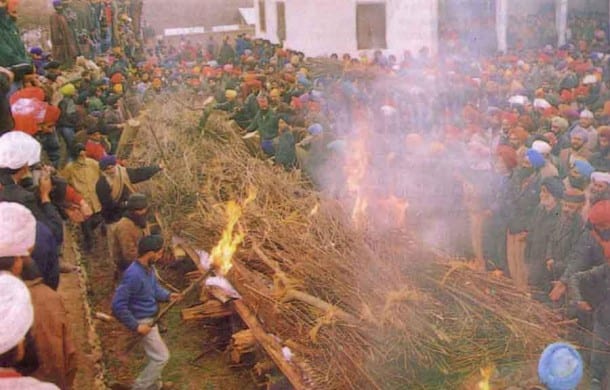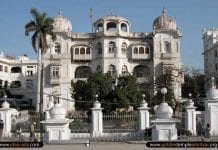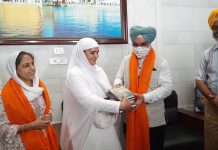In March 2000, in Chittisinghpura, a small village two-and-a-half-hours drive from Srinagar, the summer capital of the Indian state of Jammu and Kashmir, 35 innocent Sikhs were cold bloodily murdered.
The massacre coincided with the visit of United States president Bill Clinton to India. When Bill Clinton went to India in March, it was the first visit by an American president in 22 years. Bill Clinton had apparently done some risk analysis of his own. Not long before his India trip, he called the region “the most dangerous place in the world.”
Survivor Recalls The Terror
The killers came to the village at about 7.20pm. There were perhaps a dozen of them, perhaps twice that. They were dressed in the regulation issue of the Indian Army. Most people were unaware of the armed strangers standing at opposite sides of the village, near its two Gurdwaras.
They gathered up men who were returning from evening prayers and collected several more from nearby stores and houses. They worked hurriedly. Some had their faces covered with black cloth. The Sikhs were herded into two groups and made to kneel, facing the Gurdwaras. They were killed with efficiency, shot first with a persistent rat-tat-tat from a volley of machine-gun fire, then with single bursts by executioners who moved from one fallen Sikh to another, stilling motion and silencing moans.
35 Sikhs were killed, but Nanak Singh, survived and was an eyewitness to the carnage. He was at first saved by the shield of a toppling body. Then he was wounded in the hip during the second round of shooting. He tried to lie perfectly still. He remembers that some of the gunmen had faces painted in the raucous fashion of Holi, a Hindu holiday being celebrated that day. As the killers marched off, a few called out the parting words “Jai mata di,” a Hindi phrase of praise for a Hindu goddess. The entire attack lasted about half an hour.
President Clinton Condemns the Incident; India Puts Blame on Pakistan
President Clinton, acting with caution, condemned the massacre without casting blame. The first articles in Indian newspapers reported with confidence that “militants” had committed the crime. That the killers were dressed in army fatigues was easily explained away. The Hindi slogans were seen as crude, preposterous impersonations of Indian soldiers.
On March 25, Indian officials announced they had solved the crime on President Clinton’s last full day in India. The army’s Rashtriya Rifles and the state police’s elite Special Operations Group had supposedly cornered the five guerrillas in a herdsman’s shack.
As it happened, several men from the area were mysteriously missing. Speculation took off at a gallop: had Indian forces kidnapped them, murdered them, burned them and then tried to pass off their unrecognizable bodies as foreign militants. Relatives of the missing men demanded an exhumation of the bodies.
Civilian Killings Continue
On April 3, nine days after the ‘militants’ were killed and two weeks after the massacre protesters shouting “We want justice” were fired upon. Eight protesters, seven of them farmers and shepherds were killed. Some were shot in the back as they fled. Police officials claimed that their men were only returning fire, but a judicial inquiry found otherwise.
Three days later, the marchers received their wish. The five bodies were dug up by a forensics team from Srinagar. The five men killed were two farmers, two shepherds and one young cloth merchant. The killings were now considered a murderous fiction contrived by Indian security forces.
One official source confirmed: “After Chittisinghpura, there was tremendous pressure to catch the militants. Name, fame, money and career: those were the reasons to the fake encounter. They couldn’t catch the militants, so they picked up locals. Unfortunately, locals have families that ask questions. It didn’t work.”
Indian Army Fails To Conduct an Inquiry
In March 2012, the Central Bureau of Investigation told the Supreme Court that the encounter was a “cold-blooded murder”. The army was ordered to carry out an enquiry. In January 2014, the army closed the case saying no prima facie evidence came out of the investigation against five accused army men.
Nanak Singh holds the state and central governments responsible for their plight. “I have requested Prime Minister Narendra Modi to personally look into the matter and have also sent a memorandum to state Chief Minister Mufti Mohammad Sayeed. I hope their coalition government would bring some closure to the forgotten case.”





